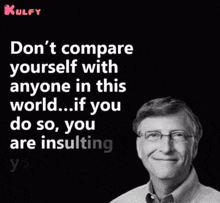
GuidanceIf you want to translate into another language, please use the translate feature in your browser

1. Introduction: The Spark That Starts It All
Behind every life-changing technology—from the device in your hand to the online platforms powering global communication—there’s a person or small team who began with nothing but an idea. They saw a problem others ignored, crafted a new solution, and pushed through obstacles until their creation was adopted worldwide.
2. The DNA of a Game-Changing Innovator
| Trait | Why It Matters |
|---|---|
| Vision | Sees what could be, not just what is |
| Resilience | Turns setbacks into stepping stones |
| Resourcefulness | Finds a way despite lacking capital or connections |
| Empathy | Designs solutions rooted in real human needs |
| Relentless Learning | Adapts quickly to change and new information |
3. From Zero to Breakthrough: The Common Journey
- Problem Recognition – Spotting a major issue or gap no one has solved.
- Idea Formation – From sketches and concepts to early prototypes.
- Early Struggles – Limited capital, a small team, market skepticism.
- First Proof of Concept – A first version that proves the solution works.
- Scaling Up – Building a team, securing funding, expanding market reach.
- Becoming an Industry Leader – The solution becomes mainstream and changes global behavior.
4. Case Study 1: Google – From Garage Startup to the World’s Search Engine
- 1995–1998: Larry Page & Sergey Brin meet at Stanford. Their research project BackRub evolves into Google.com.
- 1998: Receives $100,000 seed investment and moves into Susan Wojcicki’s garage.
- 2000–2005: Launches AdWords, Gmail, Google Maps, Google News, and goes public in 2004.
- 2006–2015: Acquires YouTube, develops Android, releases Chrome, restructures as Alphabet.
- 2016–Present: Focus on AI, Pixel series, Google Cloud, and global services like Gemini.
- Impact: Transformed how people access information and fostered an open innovation ecosystem.
5. Case Study 2: Microsoft – From Homegrown Software to Digital Backbone of the World
- 1975: Bill Gates and Paul Allen found Microsoft in Albuquerque, creating BASIC for the Altair 8800.
- 1980–1985: Signs contract with IBM for MS-DOS, launches Windows 1.0.
- 1990s: Dominates with Windows & Office Suite, expands into servers, databases, and internet tools.
- 2000–2010: Under CEO Steve Ballmer, focuses on enterprise, Xbox, and Windows XP/Vista/7.
- 2014–Present: Under Satya Nadella, transforms into a cloud giant (Azure), integrates AI (Copilot), and delivers cross-platform services.
- Impact: Set global software standards, expanded computing access, and drove digital transformation across industries.
6. The Ripple Effects of Technology Innovation
- Economic Growth: Creates new industries and expands job markets.
- Cultural Shift: Changes how we work, learn, and communicate.
- Access & Equity: Democratizes technology once reserved for a select few.
- Environmental Potential: Delivers efficiency solutions and eco-friendly innovations.

7. Lessons for Future Innovators
- Start Small, Think Big – Begin with one problem and solve it brilliantly.
- Fail Forward – Treat failures as data for improvement.
- Build the Right Team – A small, committed team can outperform a large, half-hearted one.
- Purpose-Driven Innovation – The strongest innovations are rooted in a mission with broad, positive impact.

8. A little Example
Innovation isn’t always about major breakthroughs; even small, less-adopted things can inspire others.
For example, the blog I’ve posted here is always diligent in providing strange and mind-shattering topics. However, all of this can be enjoyed by people with just a gadget, without the hassle of searching for conventional newspaper articles.
This blog is also freely distributed on the internet and is produced digitally without coding knowledge. This is proven by the fact that this web blog application was created by someone else who has perfected the technology of this site, even though it’s not widely adopted. Then I found it, adopted it, and boom! It sparks inspiration to create written works all the time, even though not everyone knows about this site. This is innovation.
9. A Big Example
Jan Koum was born in Ukraine to a poor family and moved to America as a teenager, living on welfare and working as a shop cleaner. He taught himself programming and eventually worked at Yahoo, where he began developing the idea for WhatsApp—a simple, ad-free messaging app. Initially, WhatsApp faced numerous failures and nearly shut down due to lack of funding, but Koum remained steadfast in his commitment to simplicity and privacy. The app exploded globally, and in 2014, Facebook acquired it for US$19 billion—ironic because Koum had previously been rejected for a job there. His story is proof that a difficult background is no barrier to creating world-changing technology.
🎯 Lessons from Jan Koum:
- Background isn’t destiny—poverty and limitations can fuel motivation.
- Focus on core values—WhatsApp succeeded because it stuck to its principles: fast, secure, and ad-free.
- Failure can fuel motivation—rejection from large companies fueled passion.
- Simplicity can overcome complexity—few features but hit the mark.
10. Conclusion: The Relentless Drive to Shape Tomorrow
The journeys of Google and Microsoft prove that groundbreaking innovation doesn’t require a grand start. What it demands is a clear vision, unshakable determination, and the courage to step forward when others still hesitate.
“It’s not just about inventing a product—it’s about reimagining the future and inviting the world to step into it.”

